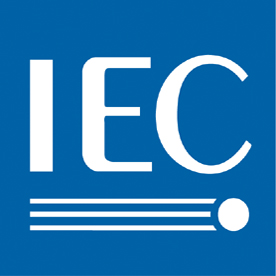- IEC Certifications - About the International Electro Technical Commission
- IEC 61215 / EN 61215 IEC 61215 Ed. 2 Aging of PV modules
- IEC61646 Thin-Film PV Modules
- IEC 61730 / EN 61730 Safety qualifications
- IEC 60364-4-41 Protection against electric shock
- IEC 62108 Concentrator PV modules
- IEC 61701 Salt mist corrosion resistance testing on PV modules
IEC certifications: IEC 61215, IEC 61646 and more explained
IEC Certifications - About the International Electro Technical Commission
The International Electrotechnical Commission (IEC) certifications are widely recognized quality standard certifications throughout the solar industry. Following an overview about the major IEC PV module certifications:
IEC 61215 / EN 61215 IEC 61215 Ed. 2 Aging of PV modules
The IEC61215 covers the parameters which are responsible for the aging of PV modules. This includes all forces of nature:
- Sunlight incl. UV.
- Climate (changing of climate, coldness, warmth, humidity).
- Mechanical load (hail, wind suction, wind pressure, snow parameters which are responsible for the ageing of PV modules).
For the standard IEC 61215 certification, 2400 Pa uniform load applies. However:
When installing solar panels in areas with heavy snow, an increased load capacity of 5400Pa is advisable. This has been included in the IEC 61215 ed. 2. Nowadays many solar manufacturers produce according to this requirement. Solar system installers who do installation in areas with heavy snow should definitely use products with an increased load capacity: 5400 Pa.
IEC61646 Thin-Film PV Modules
The IEC 61646 certification is for Thin-Film PV modules and is in many aspects identical to the international standard IEC 61215 for crystalline modules. An additional test takes the degradation behavior of amorphous silicon due to temperature and irradiance exposure into account.
IEC 61730 / EN 61730 Safety qualifications
Photovoltaic (PV) module safety qualification, which was later issued as the European standard EN 61730 (almost similar). The IEC / EN 61730 consists of 2 parts: the first part covers all the requirements for construction and states the mandatory design characteristics of the modules.
 IEC Certifications
IEC Certifications
The second part consists of the requirements for testing. Part 2 of the IEC / EN 61730 defines three different Application Classes for a module design, specifying the type of use, the related qualification tests, and the resulting safety class modifications.
IEC 60364-4-41 Protection against electric shock
IEC 60364-4-41 is about protection against electric shock for low-voltage electrical installations; it describes personnel safety measures for electrical systems. For photovoltaic systems it suggests total insulation, which requires a special insulation of the PV modules (according to Safety Class II) on the basis of the following requirements:
- Durability
- High dielectric strength
- Mechanical stability
- Sufficient insulation thickness and distances
IEC 62108 Concentrator PV modules
A special certification for Concentrator PV (CPV) modules is necessary because the high concentration of the solar irradiance through lenses or mirrors causes higher stress on the equipment. The IEC 62108 standard specifies the criteria for the design qualification and type approval of concentrator photovoltaic modules and assemblies suitable for long-term operation in general open-air climates. The world's first IEC 62108 certificate for this technology was issued in June 2009 to California-based SolFocus.
IEC 61701 Salt mist corrosion resistance testing on PV modules
The IEC 61701 certifications stipulate standards regarding the resistance requirements of photovoltaic (PV) modules against salt mist corrosion. Solar installers that are operating in a highly corrosive atmosphere such as near the sea, the resistance of PV panels against the corrosive effects should be checked. It is crucial to use PV modules tested against salt mist corrosion certification in case the modules shall be installed near coasts or used for maritime applications.
Not sure if your PV modules meet the right corrosion-resistance standards? Let’s talk — our testing specialists can help you verify compliance and choose the right modules for your site. [Contact us today →]

JUGRAJ CHOUDHARY
on 26 Apr 2023Avneet prakash
on 10 Mar 2023mashiur
on 15 Jun 2015Dricus
on 15 Jun 2015Daft P.
on 25 Jun 2015Niclas
on 26 Jun 2015Daft P.
on 30 Jun 2015Vijaykumar
on 03 Jun 2016Tahar
on 11 Aug 2017Lin
on 21 Jan 2017Veera Raghavan Natarajan.
on 15 Sep 2017Anil Poluru
on 19 Nov 2017Chandrasekhar
on 28 Jun 2018Amrutiya jay
on 21 Aug 2018Aarif
on 15 Oct 2019Paul van der Ven
on 15 Jan 2020